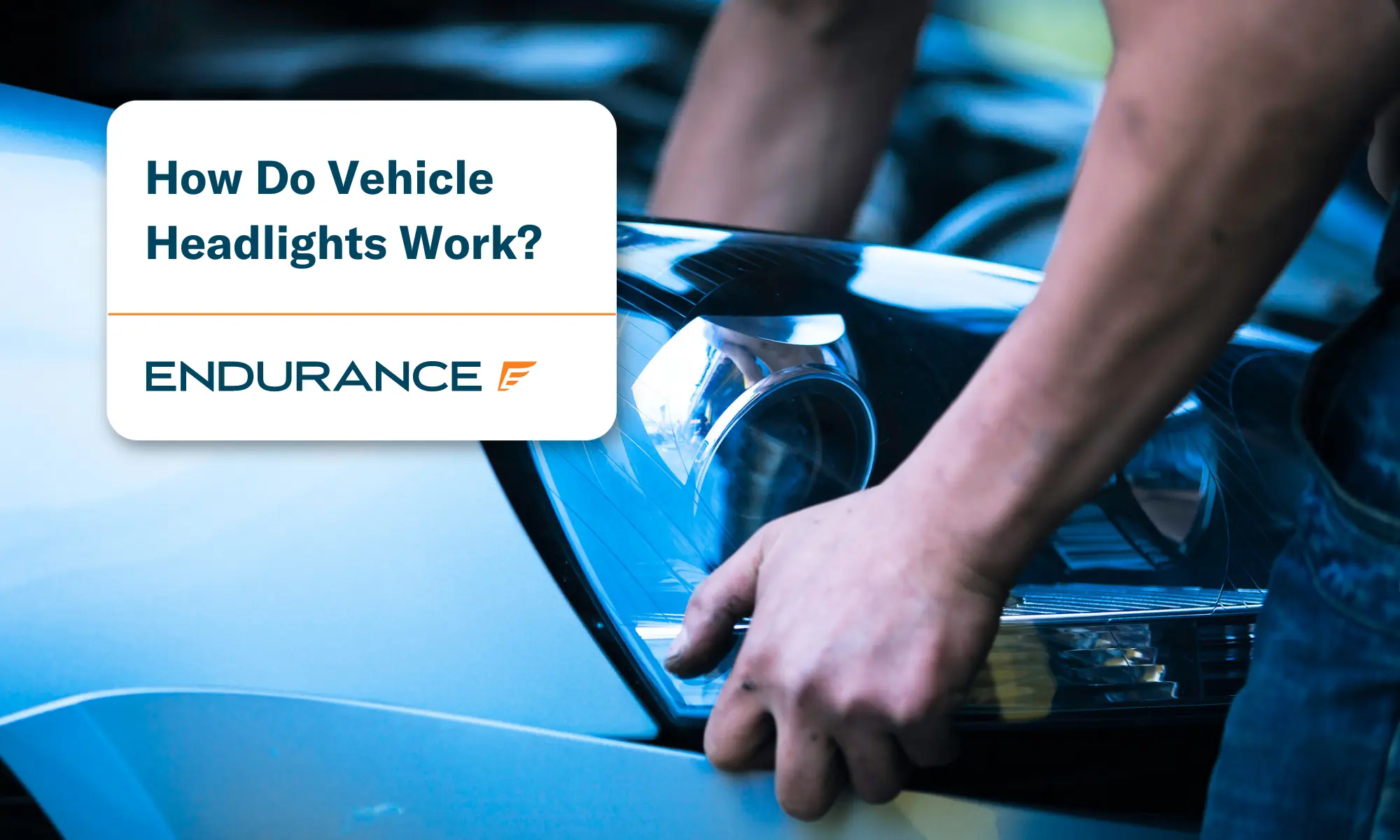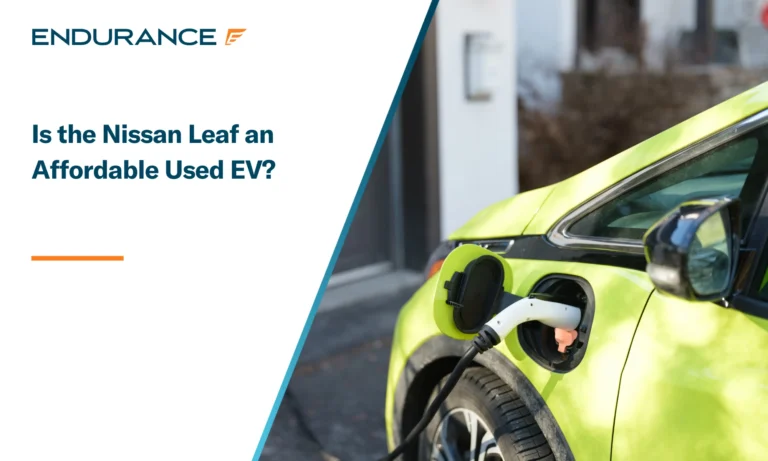How Do Headlights Work? Info About Your Car’s Headlight System

Headlights have been integral to vehicles for years, and their importance truly cannot be overstated. Without working headlights, you wouldn’t be able to get in your car after dusk due to the risk of crashing.
Despite the importance of the headlight system, though, relatively few people know how headlights work. This can make troubleshooting faulty headlights and determining whether professional repairs are needed challenging. Learn everything you need to know about how automotive headlights work.
Basics of Headlight Operation
Answering the question of “How do car headlights work?” is easier said than done, as there is more than one type of headlight. However, all headlights work in a similar enough manner to boil it down to a general description. Modern headlights, regardless of the type, almost always utilize a photoelectric sensor stationed on top of your dashboard to detect how dark it is outside the vehicle.
Once the darkness reaches a certain degree, the process of activating the headlights begins. This is where things will differ depending on the headlight in your vehicle, but generally, an electric current is passed through the headlight over a thin filament of wire or a semiconductor-type material.
This reaction produces light, which is then reflected onto the road via reflective lenses stationed around the bulb. The process works the same way when high beams are activated, though generally, the conductive material emits a stronger light or is reflected differently, resulting in the light bulb’s increased range and brightness.
Types of Vehicle Headlights: From Halogen to LED
As mentioned, there is more than one type of headlight on the road today. While the above description gives you a fairly general understanding of how a headlight works, the nuances will differ depending on the type of headlight in your car. Starting with the most traditional and gradually working towards the more cutting-edge:
Halogen Headlights: Traditional and Widely Used
Halogen bulbs are undoubtedly the most traditional and widely used headlight bulbs of all time. A halogen headlight works by taking advantage of a thin tungsten filament mixed with inert halogen gas contained in a piece of glass that is highly resistant to heat. When your headlights are activated, the electric current is passed through the glass capsule into the tungsten filament. This heats the filament up to around 4,500 Fahrenheit or 2,500 Celsius, which results in the tungsten glowing.
The additional automotive lighting systems in your headlight consist of reflective lenses that focus this light toward the road, thus illuminating your path. The light from a halogen bulb is yellow due to the heated tungsten and inert halogen gas reaction.
Xenon (HID) Headlights: Brighter and More Efficient
Two of the primary downsides to halogen headlights were the fact that they just didn’t last as long as many drivers wished, and the range of light wasn’t fantastic. This led to the introduction of Xenon (sometimes called high-intensity discharge) headlights. Rather than using a single tungsten filament, Xenon lights have a quartz housing with tungsten electrodes on either end with Xenon gas in between.
When activated, the charge passed through the housing produces a spark that ionizes the gas and creates a current between the two tungsten electrodes. Once this power reaches a certain level, something known as a ballast activates, which keeps the current going steadily. Xenon headlights typically last five times as long as Halogen lights because the latter takes more energy to run.
LED Headlights: Energy-Efficient and Long-Lasting
Moving along in terms of technological advancement, LED (light-emitting diode) headlights work by electrifying a long semiconductor, which then emits photos, thus producing the well-known white glow of LEDs. One of the major benefits of LED headlights is that they require very little energy to use, making them even more efficient than Halogen and Xenon bulbs.
One interesting fact about LED lights is that they’ve been on the road for so short in new cars that determining how long they last on average isn’t yet possible. A common complaint about LED headlights is that the beam headlights are too bright and can impact drivers’ eyes in oncoming vehicles.
For those who are considering making after-market adjustments to their own vehicles, be aware that LED headlights require specific technology and a specific housing for the LEDs. Simply throwing LEDs into a Halogen or Xenon housing will not work at all, and the reflection of the light will be all off coming out of your headlamp. An expansion of LED technology is adaptive headlights, which use the same LED bulbs described above but simply go further to enhance the driving experience.
Essentially, this technology curves and turns the direction in which the headlights shine based on which direction the vehicle is pointing or based on speed. The idea behind this is to improve the driving beam in such a way that the visibility for drivers is greatly enhanced.
Laser Headlights: The Cutting-Edge in Headlight Technology
Believe it or not, LED automotive lighting still isn’t the newest technology used on roads despite its novelty. Laser headlights are an extremely new technology that focuses a beam from three small blue lasers via a mirror in front of the diodes. This technology can generate a beam up to four times the strength of LED headlights but is a fraction of the size. So far, this technology has only been featured in some BMWs, Audis, and other select vehicles. The current problem with this type of adaptive lighting is that it has issues withstanding the freezing or searing temperatures that cars may be sitting in when not being driven.
How Headlights Enhance Road Safety
The importance of headlights cannot be overstated when it comes to road safety. In fact, roughly half of all traffic deaths occur at dusk or dawn due to factors such as limited visibility. Having headlights with an effective beam pattern can help you and oncoming drivers see the road more clearly. Newer technology that utilizes white light can also enhance driver visibility on the road while ensuring the headlight bulb lasts longer before burning out. However, low beams in older headlights, such as Halogen bulbs, can be unreliable as a light source due to aging technologies in reflector pieces.
Headlights can even assist drivers during the daytime, especially if the driver lives in an area with poor weather. The light output can pave the way when rain is dumping down, or snow is falling rapidly, allowing oncoming cars to see you in the distance. This can reduce the risk of slipping into the wrong lane.
Extra Safety with an Extended Warranty
Headlights are just the beginning in terms of important components under the hood of your vehicle. Every single piece of technology your vehicle uses serves a purpose, and a mechanical breakdown related to any part can leave you stranded on the road. That’s why investing in an extended warranty can be a smart idea.
Third-party companies offer extended warranties and provide the contract holder financial protection against mechanical breakdowns. Unlike insurance that provides coverage in the event of an accident, an extended warranty does not. Without this type of coverage, you will be on the hook for paying expensive repair costs. Whether that be a blown engine or transmission, broken headlights, or a general problem under the hood, being forced to front a repair expense can be challenging.
Once your manufacturer warranty expires, adding an extended warranty to your vehicle can allow you to regain that financial coverage. Even if you already have a manufacturer warranty on your vehicle, adding an extended warranty can provide coverage that fills in the gaps left by the manufacturer’s warranty.
Using Endurance to Protect Your Vehicle
As you’re heading down the road, the last thing you need is to discover that something is amiss with your vehicle. Even small problems under the hood can have an expensive price tag in the repair shop, which is why considering a partnership with Endurance for an extended warranty contract is crucial.
Endurance offers customizable vehicle service contracts ranging from high-level stated protection with the Superior package all the way up to near bumper-to-bumper protection with the Supreme plan. Rest assured, knowing that common components such as the AC, engine, transmission, and more are covered on all packages.
In addition to this coverage, Endurance contract holders can enjoy 24/7 roadside assistance, complete with lockout services and fuel delivery. You can also take advantage of our Elite Benefits package for a small activation fee. These bonus perks include reimbursements for up to four tires per year due to road hazards, up to $1,000 in total loss protection, and more!
To learn how Endurance can protect your vehicle, reach out to our award-winning customer service team at (800) 253-8203 to request a FREE quote. You can also shop online to see a recommended plan and price now.













Larry Witherspoon Jr. is a co-founder and Executive Director of the Automotive Training Center. Larry has held multiple leadership positions in the U. S. Navy and with various Fortune 100 companies. In addition to his business experience, Larry grew up understanding the difficulties all young men face becoming adults especially those that come from challenging circumstances. He has taken those experiences growing up and combined them with his passion for vehicles to start the Automotive Training Center. Read more about Larry.